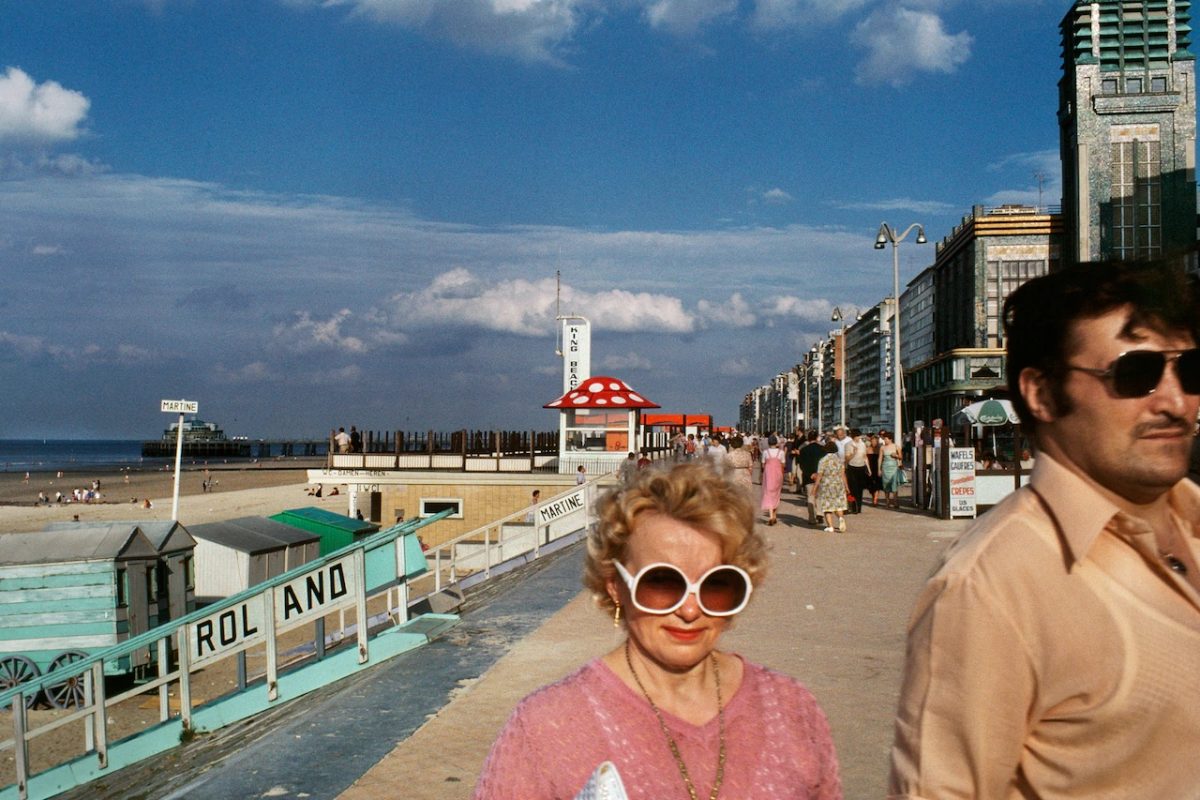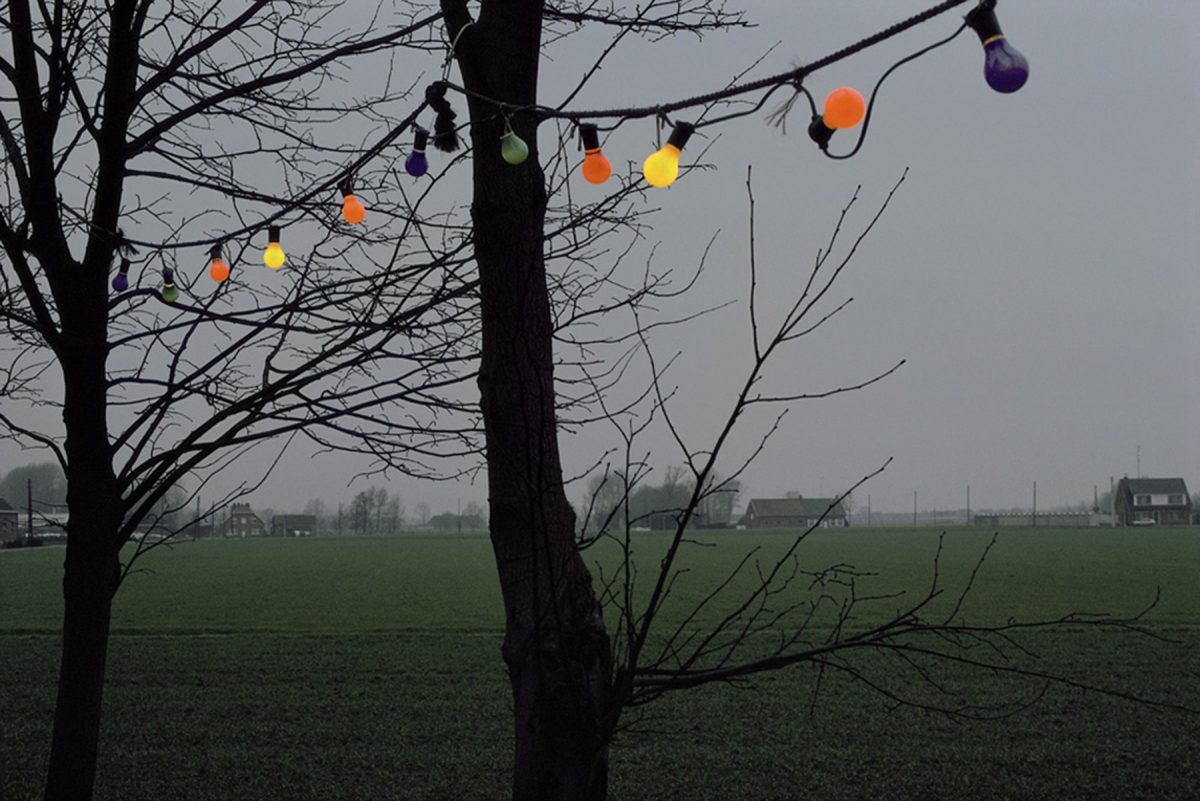‘Belgium is much more aesthetic. I’m making fun of my people and my own upbringing; colour here also refers to my relationship to my country.’
— Harry Gruyaert
Harry Gruyaert’s photographs show his preference for shooting in the street, where he can capture the unexpected, most often in glorious technicolour. His vibrant, cinematic snapshots of light are influenced by his passion for film and training at the School of Film and Photography in Brussels. As Curator François Hébel put it: “Harry Gruyaert photographs colour.”
Along with Joel Meyerovitz, Stephen Shore, William Eggleston and Saul Leiter, Gruyaert was one of the first photographers to harness the creative power of colour film.
What we see through his eye is the unusual, idiosyncratic, oddly juxtaposed and often fleeting – what he calls the “strange magic that occurs when things come together.”
So we don’t just look. We get to see. Everyday things become curious. As American photographer Diane Arbus put it when asked if street photography in New York City was simply camera-enhanced voyeurism: “It’s very subtle and a little embarrassing for me, but I really believe that there are things that nobody would see unless I photographed them.”
Harry Gruyaert’s work encapsulates that message. “The difference between me and most French photographers who work in black and white is that I was influenced by pop art,” he says. “Discovering pop art in New York for me was very important as I started looking at certain banalities in everyday life in a different way.”
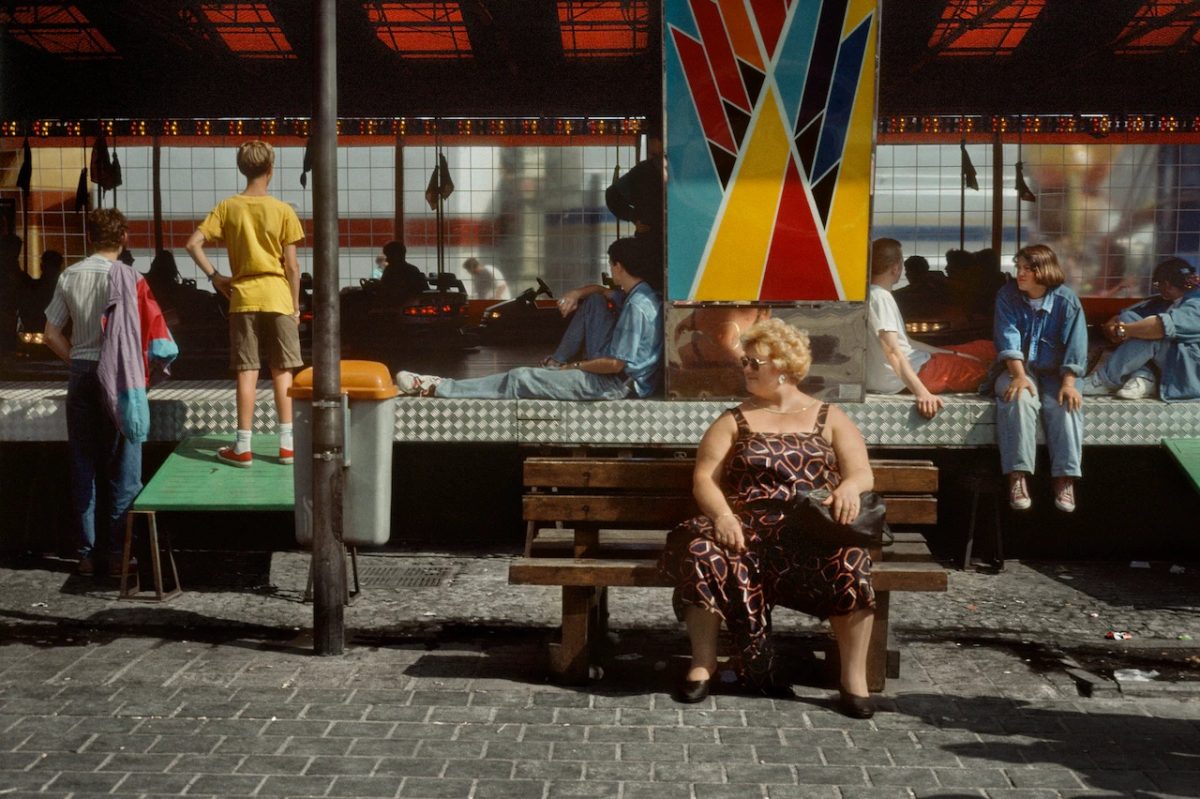
Fair in Ghent, 1991. Photo Harry Gruyaert, Courtesy Gallery FIFTY ONE
“I move around a lot, I like to be excited and discover things. It’s about freedom. If you stay in the same place for too long you’ll start to think it’s normal, but nothing is normal. One shouldn’t get used to things; it’s really important to me to see things with fresh eyes”
– Harry Gruyaert
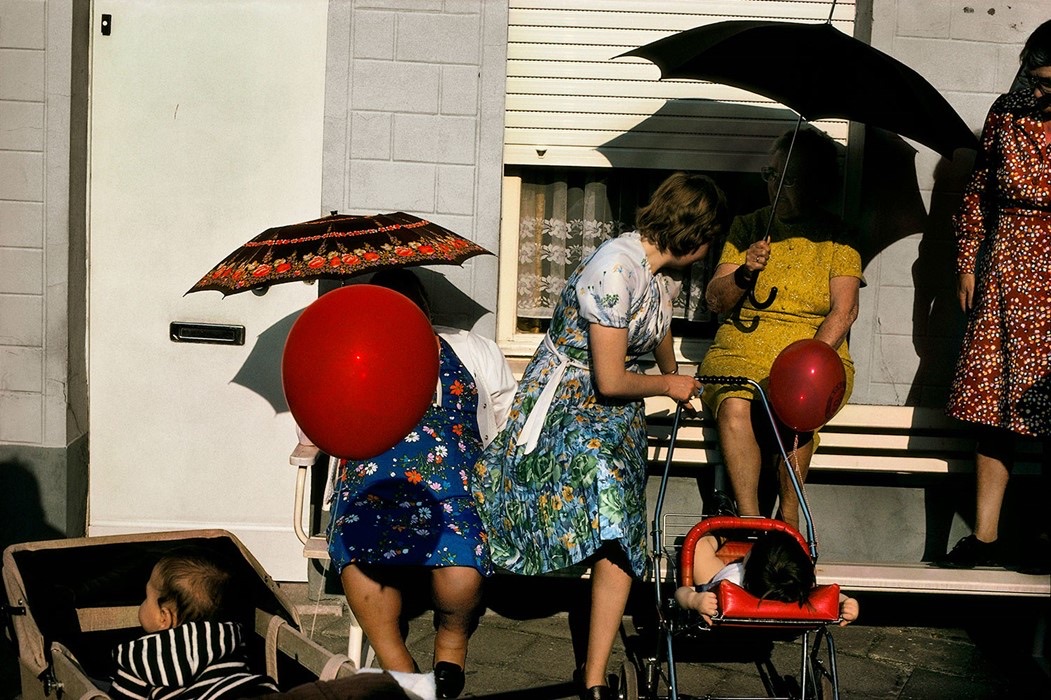
©Harry Gruyaert | Belgium, Boom, 1988 | Courtesy of Gallery FIFTY ONE
“I often shoot people from the back, it may be some form of timidity but it’s also the fact that I don’t necessarily think their faces would tell more than their bodies. When you shoot black and white faces are very important, but with colour photography it’s different.”
– Harry Gruyaert
“I’m not a social photographer. I’ve worked a lot in Morocco and India, and people insist on coming to their homes for tea, but I don’t like that, because it makes me feel less free. I’m just a pickpocket : I stay on the street, I grab a few things here and there, and then I move on pretty quickly.”
– Harry Gruyaert

©Harry Gruyaert | Belgium, Waver, 1981 | Courtesy of Gallery FIFTY ONE
“In the past, each country had much more of its own character. When you crossed the border from Belgium to the Netherlands, you could just see things change: different advertising, different colors… Now Europe is becoming like America. Everything has become more similar. You can find that a pity, but that’s just the way it is.”
– Harry Gruyaert (via)

©Harry Gruyaert | Belgium, Ostend , 1988 | Courtesy of Gallery FIFTY ONE
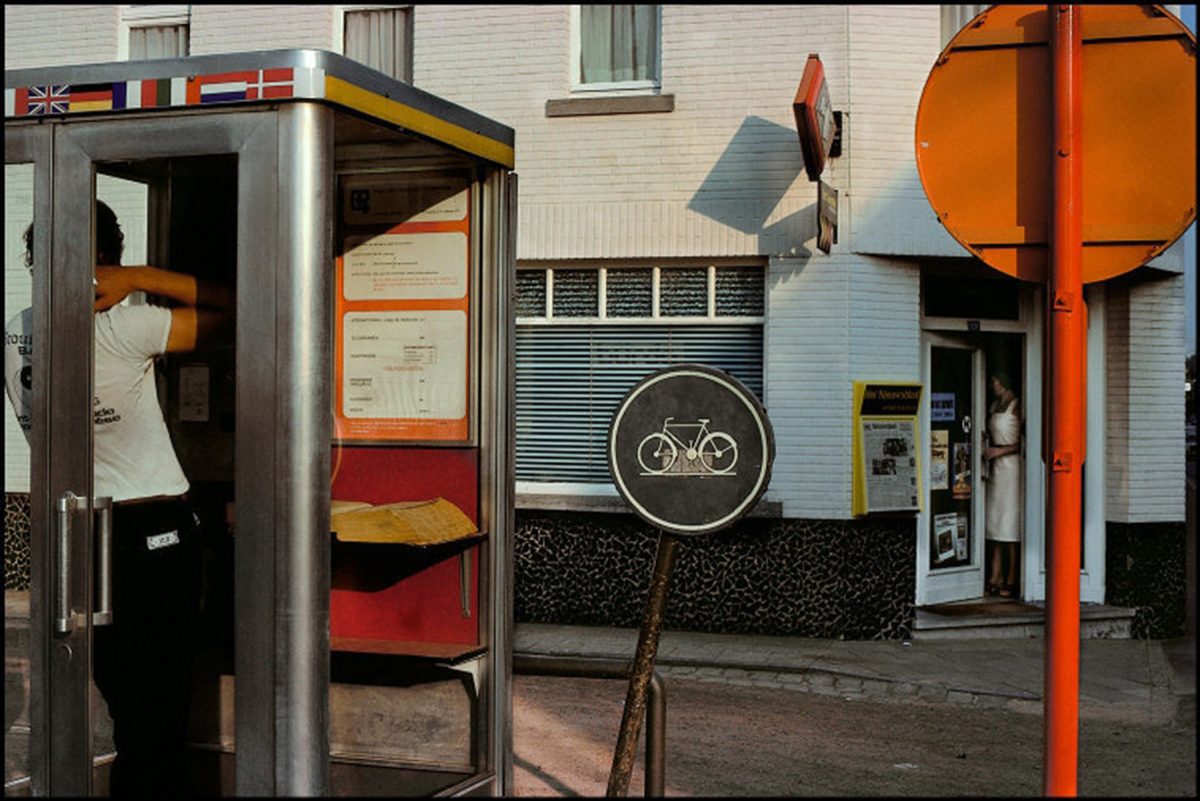
©Harry Gruyaert | Belgium, Brabant’s province, 1988 | Courtesy of Gallery FIFTY ONE
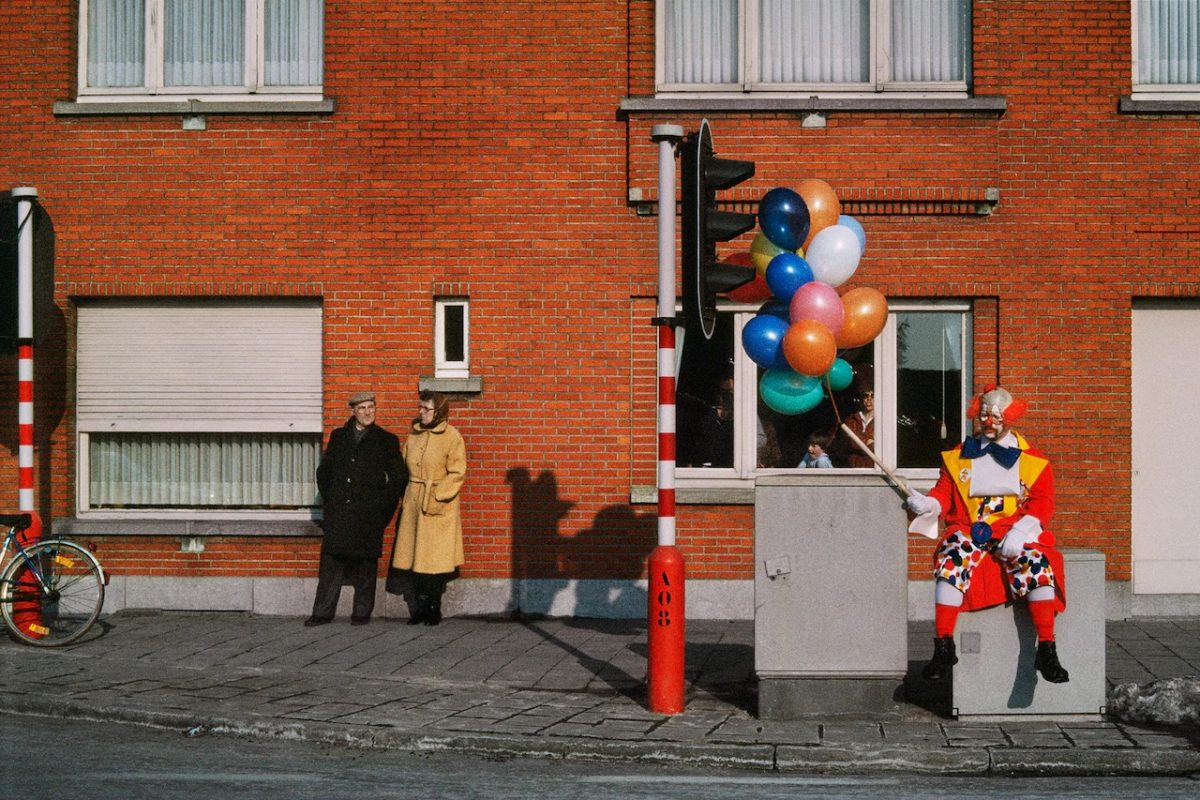
©Harry Gruyaert | Belgium, Malmedy, Carnival, 1988 | Courtesy of Gallery FIFTY ONE
You can see more of Gruyeart’s work at Gallery FIFTY ONE in his native Antwerp. Belgium, where the exhibition ‘Homeland’ coincides with the release of the eponymous book.
Homeland spans a period of fifty years, and photos taken from Blankenberge and Ostend to Liège and Malmédy, with a starring role for street scenes in cities such as Antwerp and Brussels.
The 2018 documentary Harry Gruyaert Photographer illustrates how Gruyaert’s life was changed by colour. Born to the limited and dull background of a traditional Catholic Flemish family, Gruyaert discovered the lights and colour of America. “For me, photography is not only about composition and colour,” he says “it has to say something about the time and the place.”
Would you like to support Flashbak?
Please consider making a donation to our site. We don't want to rely on ads to bring you the best of visual culture. You can also support us by signing up to our Mailing List. And you can also follow us on Facebook, Instagram and Twitter. For great art and culture delivered to your door, visit our shop.
